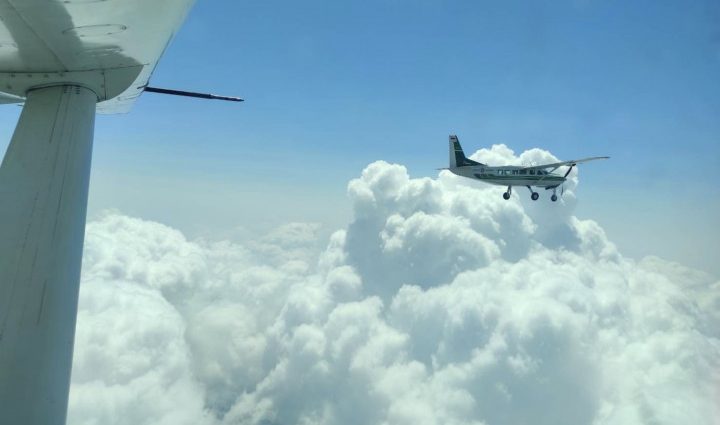Cloud seeding to take place to ease dry weather conditions in main crop-growing areas
PUBLISHED : 29 Feb 2024 at 17:00

The government plans to deploy 30 aircraft nationwide for cloud-seeding operations to induce artificial rain to battle air pollution and ease dry weather conditions in the main crop-growing areas.
The annual royal rainmaking programme began on Thursday, with seven centres set up across the country to coordinate efforts in all 77 provinces for operations in March and April, the government said in a statement.
This year’s operations will rely on 24 aircraft from the Department of Royal Rainmaking and Agricultural Aviation and six jets from the Royal Thai Air Force, it said.
Rainmaking is necessary to ease the impact of climate change on agricultural sector and prevent hailstorms and forest fires in some regions of the country, Agriculture Minister Thamanat Prompow said.
The artificial rain will also ease persistent pollution problems such as smog and unhealthy levels of fine particulate matter known as PM2.5, he said.
The operations will also replenish water supply in reservoirs and dams, which can be used for farming in irrigated areas. The summer season officially began on Feb 21 and will last until mid-May, according to the Meteorological Department.
The department’s forecasters said last week that the country would face a harsh summer this year with the temperature forecast to rise as high as 44.5C in some areas,
A combination of humidity, wind and other factors last year pushed the heat index — often referred to as the “feels like” temperature — to a record of over 50C in parts of the country, pushing electricity demand to the highest level ever.
Bangkok, Chiang Mai and other cities have grappled with poor air quality in recent years, with pollution tending to get worse in the dry season starting around December due largely to agricultural burning, forest fires in neighbouring countries and vehicular emissions.

